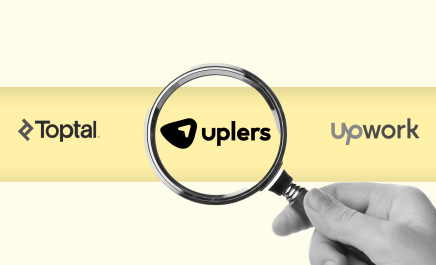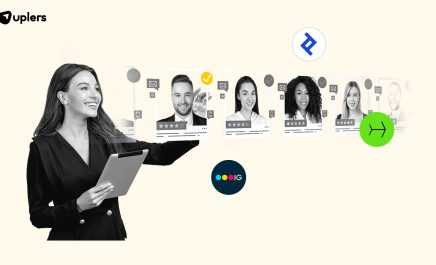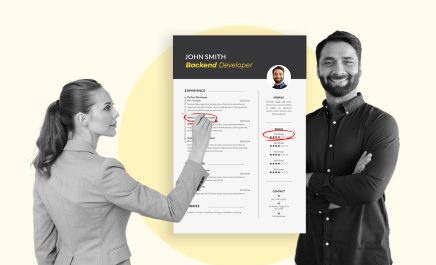Recruitment in India and the Role of AI-Enabled Platform Hiring
- Raunak Jain
- February 8, 2024
- 5 Minute Read
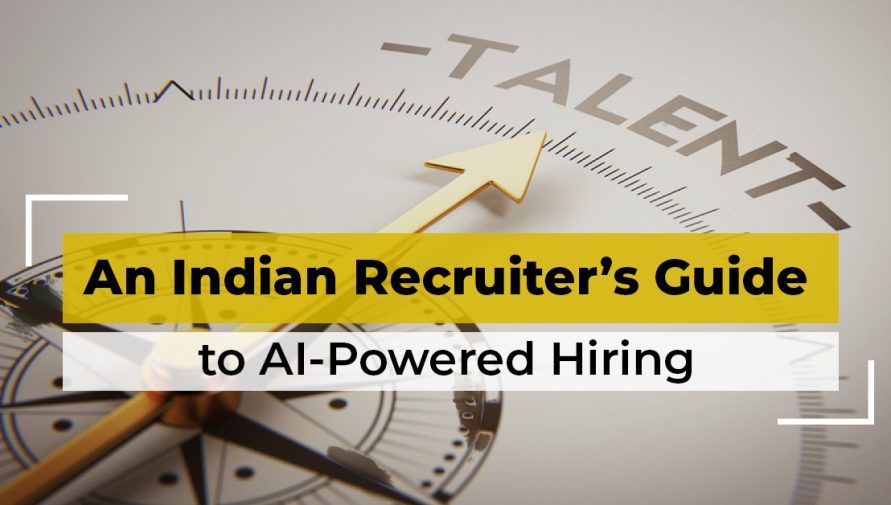
India’s rise as the premier tech talent destination has been unprecedented in the last few years. The country is now the second largest tech talent pool after the US, on the back of producing 5 million digital and tech talents every year, of which 1 million are highly-skilled with some working experience. In comparison, LatAm produces 2.3 million talents per year, East EU 1.5 million, and East Asia 650,000. This gap in talent pool is beneficial to India-based companies, as they are already in the best tech talent market, compared to other regions which are facing a talent crunch.
Despite these benefits, recruitment managers in India are under a tight deadline to source relevant talent profiles, gather applications, screen the candidates with the right tools and onboard the perfect fit. Furthermore, the C-level executives are found to invest a significant amount of time in interview processes, which can be better used in decision-making and business operations.
The current hiring cycle is 36 days long in India and some recruiters receive hundreds of applications for an open tech position, while some receive only a handful, making it very difficult to find the right candidates. The rising costs of bad hires are also signaling the need for an accurate hiring process, as hiring the wrong talent can cost you up to 30% of the professional’s first year salary.
The challenge to gather applications and form a repository of talents is inhibiting companies from deploying the right kind of Artificial Intelligence (AI) and Machine Learning (ML) solutions. These next-gen technologies require a deep talent pool to suggest the best candidates for a particular role and set up a reliable hiring process.
Before we discuss the right solution for Indian talent acquisition specialists, let us first discuss the way Indian recruiters currently hire.
Traditional Hiring Methods in India
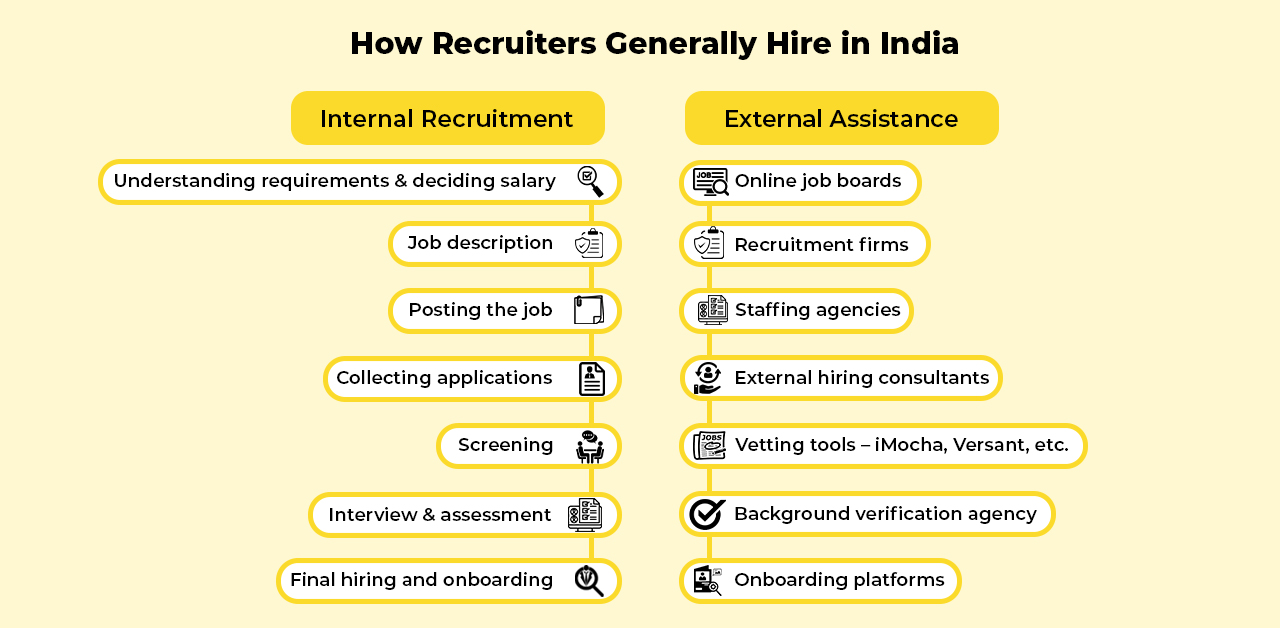
Internal recruitment
In this method, companies set up a dedicated division for the complete hiring process – sourcing, vetting, interviews, and onboarding. The biggest benefit of this method is that the organization has total control over the process and can even build a repository of candidate resumes who may not be fit for a role at a particular moment but can be recalled for an interview in the future.
This method comes with a lot of limitations, as mentioned below:
- Recruiters have to conduct a lot of deep research to find out the salary levels for tech roles. They may have to buy a paid report or get in touch with an industry expert, which means a lot of effort is invested in the preparation phase itself.
- Many businesses do not know that every role demands a different JD, not the same one with minor changes. JDs that outline the responsibilities and give a lot of clarity about the role attract the right candidates. This and many other aspects of writing a proper JD is proving to be a major challenge in sourcing talents.
- Posting job vacancies on the company website does not serve the purpose as talents are mostly active on other platforms and online networking sites. In the end, only the ones who visited the company website are aware of the opening, signaling a very low outreach.
- Maintaining a repository of talent profiles, sifting through them, and organizing for future references demands a lot of time and effort from hiring managers.
- Standardized assessments are not enough to know if a candidate will be a technical and cultural fit for the role. Every job role demands a tailor-made assessment pertaining to the responsibilities However, it is a time-taking task in internal recruitment.
- Companies usually hold several rounds of interviews with various stakeholders involved in the process. This ultimately increases the hiring cycle and the decision-making is influenced only by a few conversations.
- It takes a lot of time to onboard a candidate using this method, and hiring managers are still unsure if the talent is indeed the ‘perfect fit’ for them.
External assistance
In this method, organizations take help from an agency or consultants for various stages of the hiring process. Recruitment and staffing agencies help in sourcing talent for various job roles, a few of them also facilitate interviews and resume-based vetting. Some companies often take the help of external hiring consultants who identify problems in the hiring process and suggest tips for improvement.
It must be noted that external assistance also has its share of limitations:
- Recruitment firms and staffing agencies help in sourcing local talents but they do not conduct deep vetting to understand if the talent is a good fit for the organization.
- The experience and knowledge of hiring consultants proves valuable in ensuring a seamless hiring process, but they do not properly understand the cultural aspects of the talent required in the organization.
- The involvement of so many stakeholders in the process does not guarantee perfect matchmaking.
- Cost is also a major factor, as the fees of numerous external agencies at the end of the process will be massive, which is not suitable for SMEs.
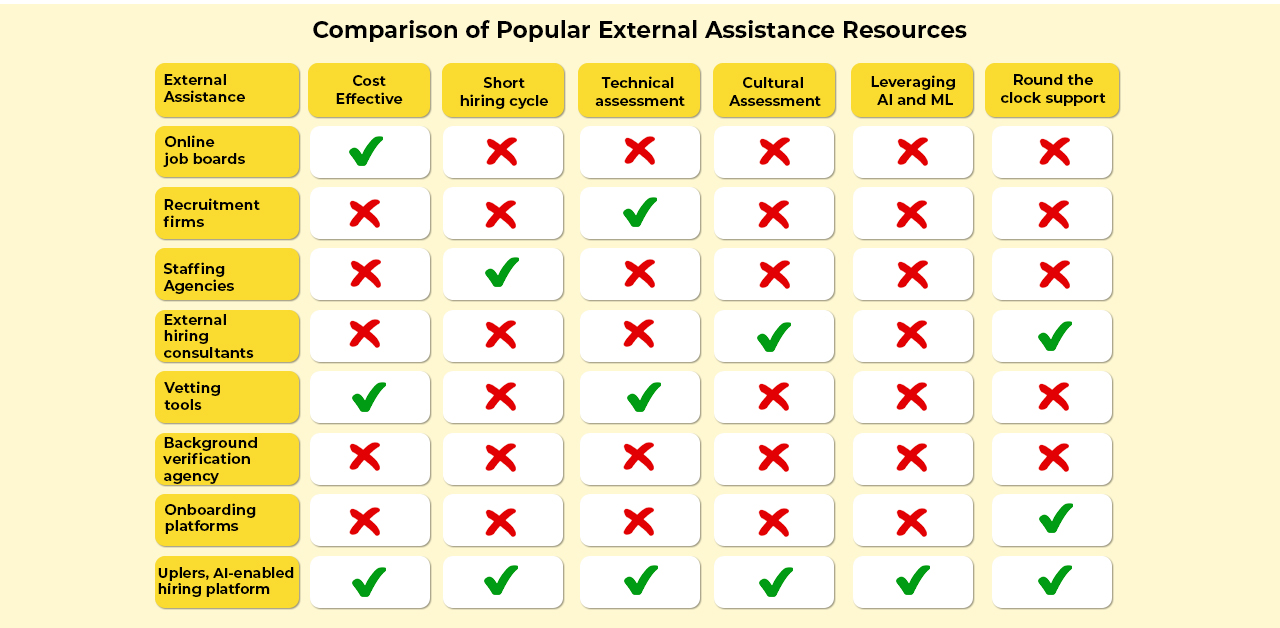
How AI Can Help in Transforming Your Hiring Process
Smart recruitment teams across the globe are experimenting with AI and ML tools, as they recognize its importance in enhancing the future of hiring. It is very important to find the right solution for these technologies in mapping job descriptions, evaluating tech proficiency, and streamlining recruitment, as the wrong implementation can be a gimmick.
Here are a few statistics that shed light on the growing importance of AI:
- 95% of recruiters believe AI can be beneficial for the application process
- 41% of businesses use AI-powered chatbots to engage with candidates
- Early AI recruitment adopters have seen their cost per screening candidate reduced by 75%
- 46% of HR leaders say new technology is the top investment priority in 2023
There are several large-scale Indian companies leveraging the power of AI to identify suitable candidates with relevant skills and experience, and automate tasks like resume screening, candidate selection, and scheduling interviews. However, this experimentation demands a lot of time and resources, which is why companies like LycaDigital and TripAdvisor are instead using Uplers’ Gen AI to find and hire their perfect fit.
Step-by-step Guide For Hiring With Uplers’ Gen AI
Uplers has a one million-strong talent network of the top 3.5% Indian professionals with different levels of screening. When you upload your JD on our platform, our ML tool identifies the most suitable talents, then UpScreen (our AI-powered tool) creates an assessment test customized as per the job role. Recruiters and TAs can evaluate the talent’s video recorded while giving the test and review the proctoring report to check if the candidate’s score is authentic. In the next step, the recruiter can schedule an interview with their preferred talents and onboard after making a decision.
We takeover most of the responsibilities – talent sourcing, comprehensive vetting, and candidate report generation, so you can focus solely on making well-informed hiring decisions. Our AI ensures all the processes are executed at a fast pace, so you can close the vacancy as soon as possible, with zero impact on your operations.
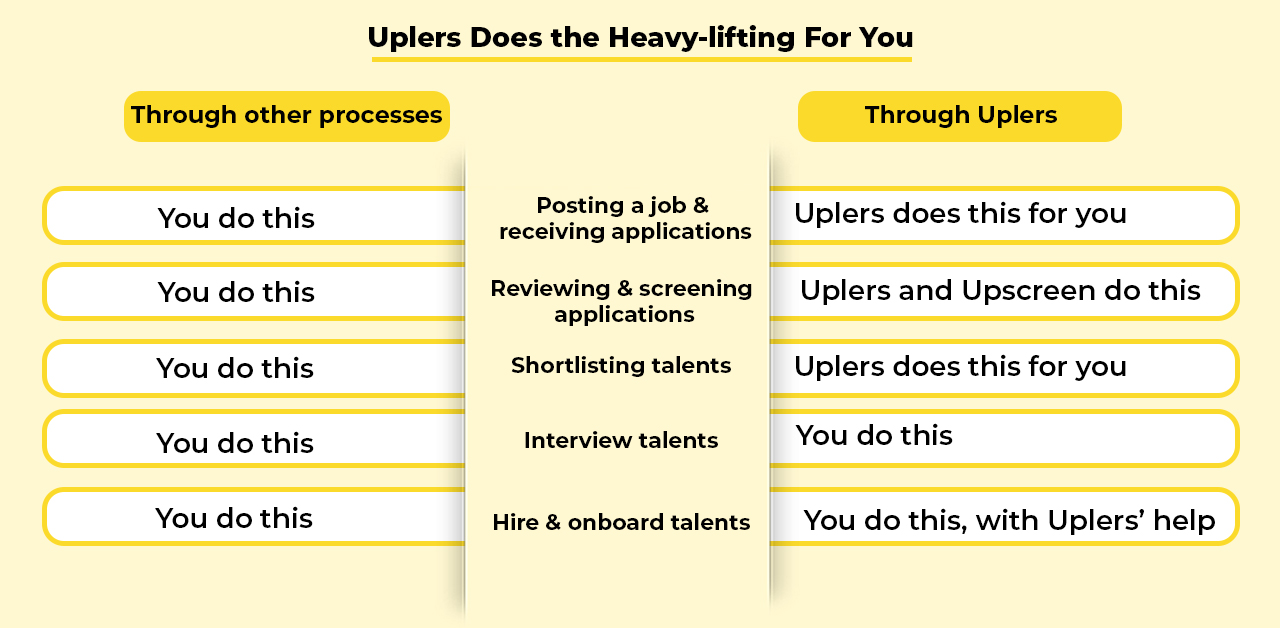
Using Machine Language (ML) signals, we are able to find the most relevant deeply vetted profiles for your organization who are technically proficient and culturally adaptable. 90% of the work is done in this phase, and you decide whom to interview and hire.
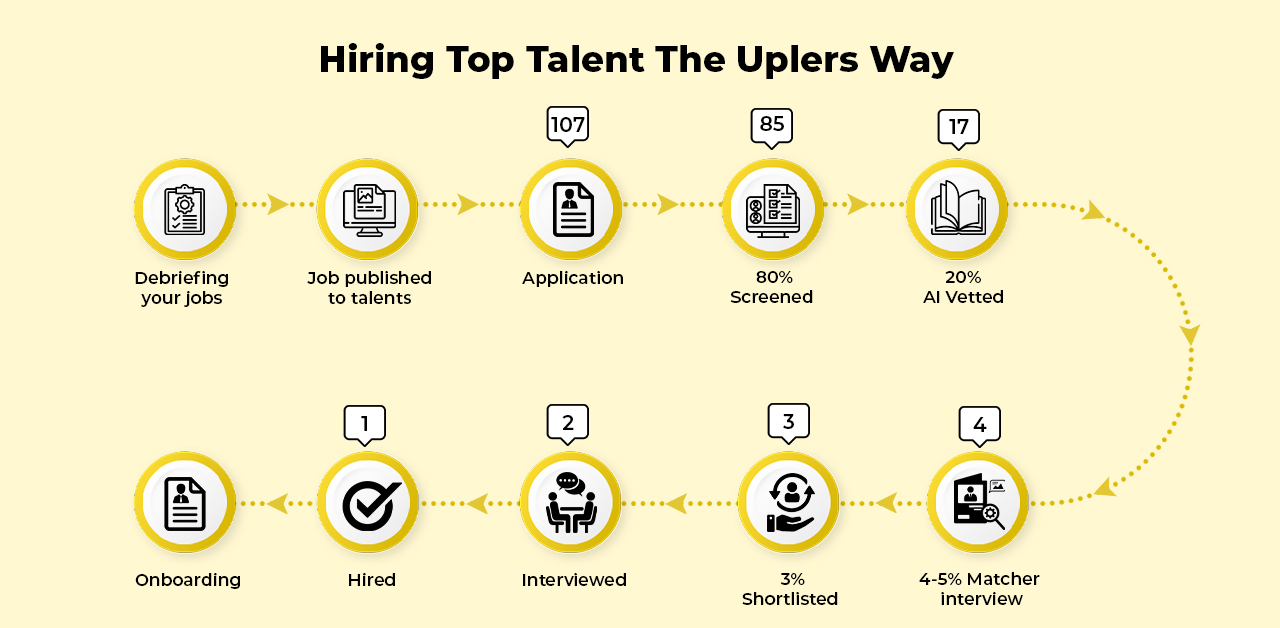
Finding your next top talent is now easier with Uplers, as you can post a job on our website, leverage our AI-based vetting tool, and enjoy an end-to-end hiring process, from talent sourcing to onboarding. In the end, you can cut down the hiring cycle by 64% while hiring for 100+ tech and digital roles.

Thank you for submitting the details!
We will keep your information safe. Feel free to contact us with any questions at hello@uplers.com
Please check your email for next steps shared by Robert.
